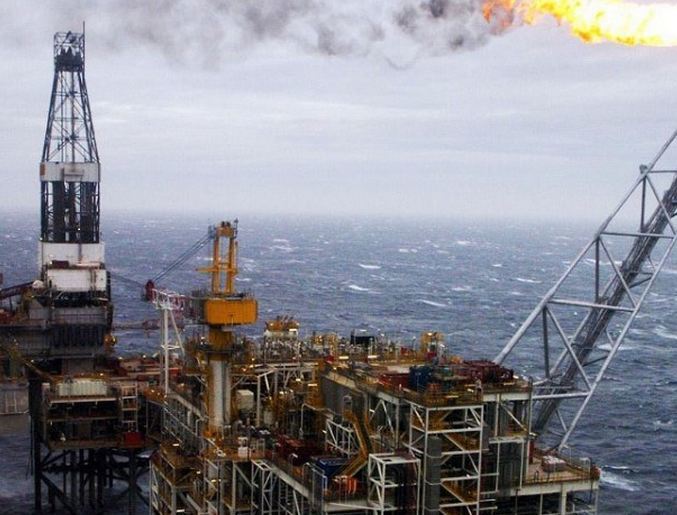
Oil closed above $50 a barrel in New York for the first time in more than 10 months as U.S. crude stockpiles are estimated to have fallen for a third week, trimming a glut.
West Texas Intermediate oil rose 1.4 percent to the highest settlement since July 21. Inventories declined by 3 million barrels last week in the U.S., according to a Bloomberg survey before a report from the Energy Information Administration on Wednesday. Royal Dutch Shell Plc is repairing a key pipeline in Nigeria under very tight security, according to a person familiar with the operations. Earlier reports said work wasn’t proceeding on the link.
Crude has surged about 90 percent from a 12-year low in February amid unexpected disruptions and a continuous slide in U.S. output, which is under pressure from the Organization of Petroleum Exporting Countries’ policy of pumping without limits. Saudi Arabia will maintain the same level of production capacity until 2020 under a new economic reform plan approved by the government to reduce its reliance on oil.
“The path of least resistance for crude is still higher and outages in Nigeria and expectations of strong EIA data tomorrow are helping the trend,” said Clayton Rogers, an energy derivative broker at SCS Commodities Corp. in New Jersey. “I think the real story is just how range-bound this market is.”
WTI for July delivery rose 67 cents to close at $50.36 a barrel on the New York Mercantile Exchange. Prices are up 36 percent this year.
Energy Rally
Futures traded near the settlement after the industry-funded American Petroleum Institute was said to report U.S. crude supplies fell 3.57 million barrels last week. WTI traded at $50.37 at 4:38 p.m in New York. Total volume traded was 13 percent below the 100-day average.
Brent for August settlement rose 89 cents, or 1.8 percent, to $51.44 a barrel on the London-based ICE Futures Europe exchange. It was the highest close since Oct. 9. The global benchmark crude ended the session at a 52-cent premium to August WTI.
Energy companies accounted for nine of the ten biggest gainers on the Standard & Poor’s 500 Index. The S&P 500 Oil & Gas Exploration and Production Index climbed 2.7 percent to the highest level since November at the close of the day’s trading.
“My concern is that you’ve already built a lot of good news into the price,” said Bill O’Grady, chief market strategist at Confluence Investment Management in St. Louis, which oversees $4.3 billion. “We may soon have discounted all the positive news.”
For a story on the cost of Saudi Arabia’s energy projects, click here.
Cushing Stockpiles
Crude stockpiles at Cushing, Oklahoma, the delivery point for WTI and the biggest U.S. oil-storage hub, probably declined by 671,000 barrels last week, according to the median estimate in a Bloomberg survey. In the week ended May 27, nationwide inventories dropped by 1.37 million barrels to 535.7 million, according to the EIA.
The repairs in Nigeria were being carried out in two different sites of the Forcados pipeline, which was hit by explosions in February and again last week, said the person, who asked not to be named because of security concerns. Earlier Chief Financial Officer Simon Henry said the company had to withdraw repair crews last week after a second attack against the 48-inch export pipeline that links onshore storage tanks with an offshore port.
Gasoline Outlook
Gasoline futures fell amid speculation that demand for the fuel won’t meet expectations. U.S. refiners typically increase utilization this time of year after finishing maintenance as the peak-demand driving season commences. Consumption during the second and third quarters this year will average a record 9.5 million barrels a day, up from 9.48 million forecast in May, the EIA said ts monthly Short-Term Energy Outlook released Tuesday.
“The one bearish blot out there is gasoline,” O’Grady said. “Refineries were expected to run at about 95 percent of capacity to make gasoline, which would lead to further crude inventory declines. This might have been overoptimistic.”
July gasoline futures slipped 0.1 percent to $1.5871 a gallon, the lowest close since May 12. While the July contract declined, those for other months rose. The market is in contango, when prices for delivery today are lower than those in future months, which may signal weak near-term demand or rising supply.
Oil-market news:
“The much-anticipated rebalancing of supply and demand now seems within reach,” Trafigura Group Pte CEO Jeremy Weir said in the trading firm’s first-half report. Oil may never get back to $100 a barrel and current prices represent an opportunity to reset the industry’s cost base, said Shell Chief Executive Officer Ben Van Beurden.
Recommended for you
